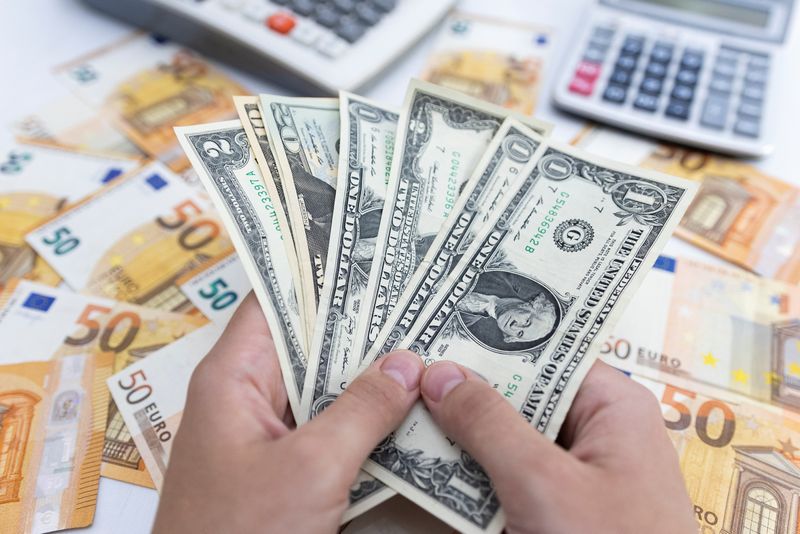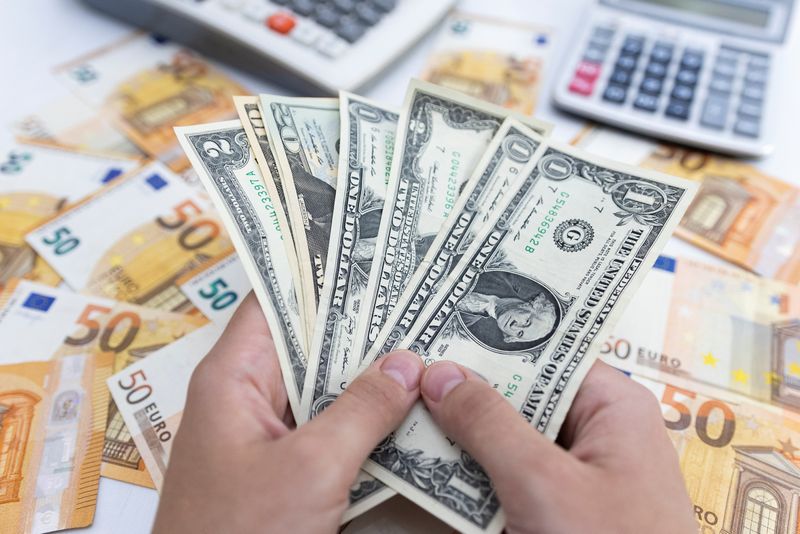Forex
US dollar up slightly after GDP data; euro falls after ECB, Lagarde comments


© Reuters. FILE PHOTO: Woman holds U.S. dollar banknotes in front of Euro banknotes in this illustration taken May 30, 2022. REUTERS/Dado Ruvic/Illustration/File Photo
By Gertrude Chavez-Dreyfuss
NEW YORK (Reuters) -The U.S. dollar edged higher on Thursday after data showed the world’s largest economy grew at a faster pace than expected in the fourth quarter, suggesting the Federal Reserve would be in no rush to cut interest rates amid a generally stable economy.
The , a gauge of the greenback’s value versus six major currencies, was last up 0.1% at 103.37 ().
The euro, on the other hand, fell against the dollar, after mixed comments from European Central Bank President Christine Lagarde. She said it was “premature to discuss rate cuts” for the euro zone economy, but noted that the risks to economic growth remain “tilted to the downside.”
The ECB, at its policy meeting on Thursday, left borrowing costs unchanged.
The single euro zone currency last traded at $1.0863, down 0.2%.
In the United States, the Bureau of Economic Analysis’s advance GDP estimate showed that gross domestic product in the last quarter increased at a 3.3% annualized rate, compared with the consensus forecasts of growth at a 2.0% rate.
“It’s only fitting that a year that defied expectations would show growth that exceeded expectations. You have to squint to see weakness in the numbers,” said Brian Jacobsen, chief economist, at Annex Wealth Management, at Menomonee Falls, Wisconsin.
“What’s not to like? The problem for the market is that the Fed doesn’t have to be in a hurry to cut. Rather than cutting sooner and faster, the Fed can cut later and slower.”
Post-data, U.S. rate futures market priced in a roughly 47% chance of easing at the March meeting, up from late Wednesday’s 40% probability and the 80% chance factored in two weeks ago, according to LSEG’s rate probability app.
The market is pricing in the first rate cut to occur at the May meeting with a 91% probability.
Next week, the Fed is widely expected to stand pat but comments from Chair Jerome Powell will be intensely scrutinized to assess if the U.S. central bank is ready to start cutting interest rates.
For the ECB, investors priced in rate cuts of 130 basis points (bps) in 2024, roughly in line with the level seen before the ECB statement. They were discounting 150 bps in mid-January.
Aside from GDP data, a separate report from the Labor Department showed that initial claims for state unemployment benefits increased 25,000 to a seasonally-adjusted 214,000 for the week ended Jan. 20. Economists had forecast 200,000 claims in the latest week.
Its market impact was muted though given the release of the GDP data.
In other currency pairs, the dollar slid 0.2% versus the yen to 147.22.
Sterling was slightly down at $1.2717.

 Forex3 years ago
Forex3 years agoForex Today: the dollar is gaining strength amid gloomy sentiment at the start of the Fed’s week

 Forex3 years ago
Forex3 years agoUnbiased review of Pocket Option broker

 Forex3 years ago
Forex3 years agoDollar to pound sterling exchange rate today: Pound plummeted to its lowest since 1985

 Forex3 years ago
Forex3 years agoHow is the Australian dollar doing today?

 Cryptocurrency3 years ago
Cryptocurrency3 years agoWhat happened in the crypto market – current events today

 World3 years ago
World3 years agoWhy are modern video games an art form?

 Commodities3 years ago
Commodities3 years agoCopper continues to fall in price on expectations of lower demand in China

 Economy3 years ago
Economy3 years agoCrude oil tankers double in price due to EU anti-Russian sanctions





















